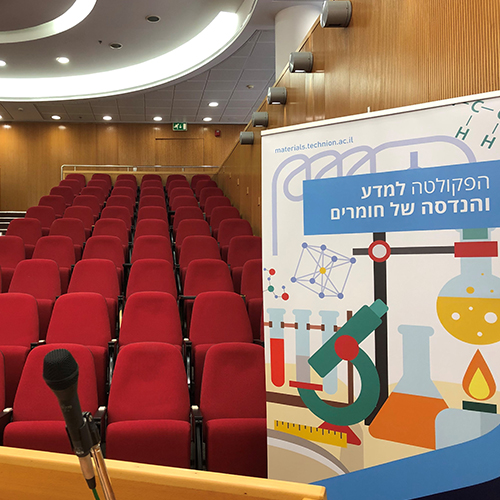
Mr. Ariel Lifer - M.Sc. Candidate
18/05/2025
אודיטוריום ע"ש דויד וואנג, בניין מידן, קומה 3
13:30
Organic Mixed Ionic Electronic Conductors (OMIECs) uniquely combine ionic and electronic transport, enabling efficient signal transduction for bioelectronics and sensing applications. Understanding the relationship between morphology, porosity, and conductivity in these materials is essential for optimizing their performance. This study characterizes three types of OMIECs with unique morphologies affecting ionic and charge transport. First, we investigated the ladder-type OMIEC polymer BBL, known for exceptional conductivity, previously attributed to porosity. Using imaging techniques, we demonstrated that BBL lacks macro-scale porosity, suggesting alternative mechanisms for its conductivity. We then explored porosity-engineering strategies. The first approach used electro-polymerization of PEDOT-based polymers to form fibrous networks with tunable morphologies. Varying monomers and polymerization time significantly impacted morphology, permeability, conductivity, capacitance, and ionic transport dynamics. The second approach employed selective removal techniques in two sub-strategies: block copolymers and polymer blends. Block copolymers enabled precise morphology control by adjusting etching time, block types, and lengths. Polymer blends combined OMIEC polymers with a secondary polymer later dissolved; blend composition and molecular weights influenced morphology and transport properties. These findings provide valuable insights into OMIEC design, paving the way for improved performance in future applications.


